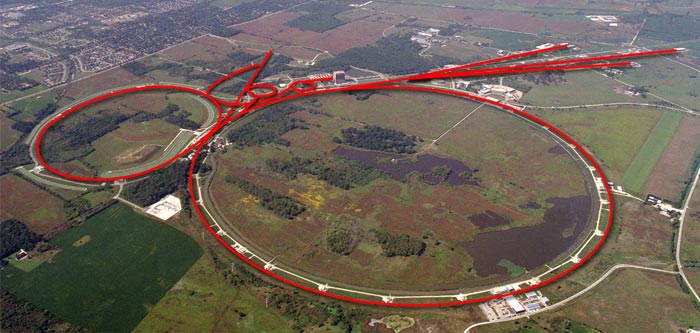Why We Exist: Matter Wins Battle Over Antimatter

The seemingly inescapablefact that matter and antimatter particles destroy each other on contact haslong puzzled physicists wondering how life, the universe or anything else canexist at all. But new results from a particle accelerator experiment suggestthat matter does seem to win in the end.
The experiment has shown asmall — but significant — 1 percent difference between the amount of matterand antimatter produced, which could hint at how our matter-dominated existencecame about.
The current theory, knownas the Standard Model of particle physics, has predicted some violation ofmatter-antimatter symmetry, but not enough to explain how our universe aroseconsisting mostly of matter with barely a trace of antimatter.
But this latest experimentcame up with an unbalanced ratio of matter to antimatter that goes beyond theimbalance predicted by the Standard Model. Specifically, physicists discovereda 1 percent difference between pairs of muons and antimuons that arise from thedecay of particles known as B mesons.
The results, announcedTuesday, came from analyzing eight years worth of data from the Tevatroncollider at the Department of Energy's Fermi National Accelerator Laboratory inBatavia, Ill.
"Many of us felt goosebumps when we saw the result," said Stefan Soldner-Rembold, a particlephysicist at the University of Manchester in the United Kingdom. "We knewwe were seeing something beyond what we have seen before and beyond whatcurrent theories can explain."
The Tevatron collider andits bigger cousin, the Large Hadron Collider at CERN in Switzerland, can smash matter andantimatter particles together to create energy, as well as new particles andantiparticles. Otherwise, antiparticles only arise due to extreme events such asnuclear reactions or cosmic rays from dying stars.
Get the Space.com Newsletter
Breaking space news, the latest updates on rocket launches, skywatching events and more!
Measurements made by theDZero collaboration, a 500-member international group, are still limited by thenumber of collisions recorded so far. That means physicists will continue tocollect data and refine their analysis of the matter-antimatter struggle fordominance.
Researchers came up withtheir latest finding by performing a so-called blind data analysis, so thatthey would not bias their analyses based on what they observed. They have submittedtheir results to the journal Physical Review D.
- The Strangest Things in Space
- What is Antimatter
- Space Station Experiment to Hunt Antimatter Galaxies
Join our Space Forums to keep talking space on the latest missions, night sky and more! And if you have a news tip, correction or comment, let us know at: community@space.com.

Space.com is the premier source of space exploration, innovation and astronomy news, chronicling (and celebrating) humanity's ongoing expansion across the final frontier. Originally founded in 1999, Space.com is, and always has been, the passion of writers and editors who are space fans and also trained journalists. Our current news team consists of Editor-in-Chief Tariq Malik; Editor Hanneke Weitering, Senior Space Writer Mike Wall; Senior Writer Meghan Bartels; Senior Writer Chelsea Gohd, Senior Writer Tereza Pultarova and Staff Writer Alexander Cox, focusing on e-commerce. Senior Producer Steve Spaleta oversees our space videos, with Diana Whitcroft as our Social Media Editor.









